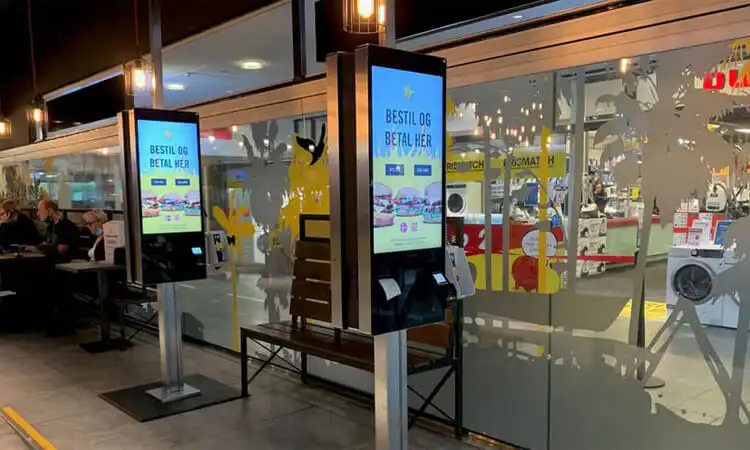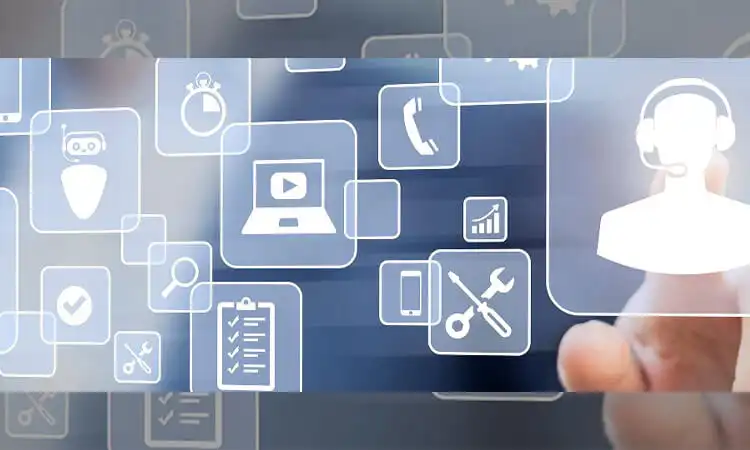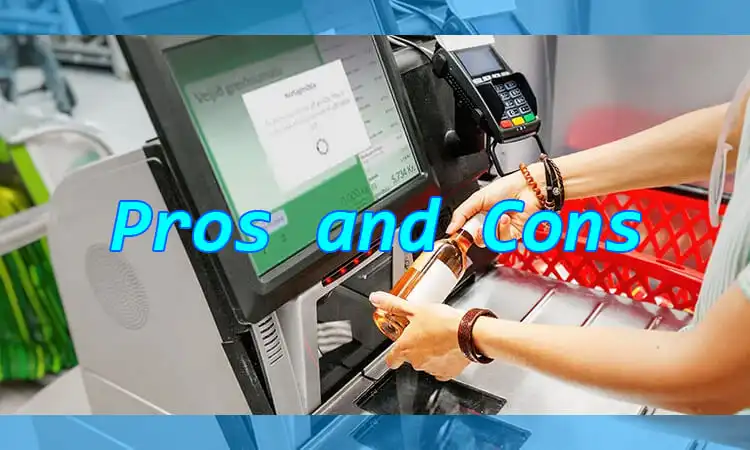Retail self-service has become increasingly popular in recent years. With the rise of technology, businesses are turning to self-service kiosks and other automated systems. But is retail self-service right for your business? In this article, we’ll explore the pros and cons of retail self-service and best practices for implementation. By the end of this article, you’ll better understand whether retail self-service is a good fit for your business.
What is Retail Self Service?
Retail self-service refers to the use of technology and automated systems. They allow customers to complete transactions and access information without needing help from a salesperson. Examples of retail self service technology include self-checkout kiosks, interactive displays, and mobile ordering systems.

Several factors have driven the adoption of retail self-service. These include the growing popularity of e-commerce and the need for businesses to remain competitive by offering a seamless omnichannel experience. Self-service technology can also help businesses save on labor costs. It can increase productivity by freeing up employees to focus on other tasks.
In particular, self-service kiosks have become a common sight in many retail environments. These kiosks can offer product information and loyalty program enrollment.
While retail self service can benefit both businesses and customers, it is not without its drawbacks. Technical issues and maintenance costs can be a concern. Some customers may prefer the personal interaction that comes with traditional customer service.
You can self-checkout by adding tags to your items, so you need to get to know the tags first. Here are three different labels:
Pros of Retail Self Service
Retail self-service offers several benefits for businesses and customers alike. Here are some of the key pros of retail self service:
Improved Customer Experience
Retail self-service allows customers to take control of their shopping experience. It can lead customers to increased satisfaction and loyalty. Customers appreciate the convenience and speed of self-service, especially when they’re in a hurry or want to avoid long lines.
Increased Efficiency and Productivity
Retail self-service can streamline routine tasks. It frees employees to focus on other tasks, such as customer service. This can lead to increased productivity and cost savings for businesses.
Cost Savings
Retail self service technology can be a cost-effective solution for businesses. By reducing the need for human labor, businesses can save on staffing costs and increase profitability.
Ability to Collect Customer Data
Retail self service systems can collect data on customer behavior, such as purchasing habits. This data can be used to personalize the customer experience and improve marketing efforts.
Reduced Errors
Self service technology can help reduce errors in manual processes. This can improve accuracy and reduce the risk of customer complaints or lost revenue.
In addition to these benefits, it can help businesses stay competitive in the modern retail landscape. Many customers now expect self service options, and businesses that fail to offer these options risk losing customers to competitors who do.
However, it’s important to note that retail self-service is not a one-size-fits-all solution. Businesses must consider whether it suits their specific needs and customer base. While it can provide many advantages, it does not replace human interaction and customer service. Retailers must balance self-service and traditional customer service to provide the best possible experience for their customers.
Cons of Retail Self-service
While retail self-service has several benefits, it’s not without its drawbacks. Here are some of the key cons of retail self-service:
Technical Issues and Maintenance Costs
Retail self-service systems can be complex. Businesses need regular maintenance to ensure they function properly. Technical issues can cause disruptions to operations and negatively impact the customer experience.
Lack of Personal Interaction
Retail self-service can lead to a lack of personal interaction with customers, which can sometimes be a disadvantage. Customers may require assistance or have questions the self-service technology cannot answer.
Potential for Theft and Fraud
Self-service technology can create opportunities for theft and fraud. For example, scanning items without paying or using stolen credit cards. Businesses can mitigate these risks by installing measures such as security cameras.
Limited Customization Options
Retail self-service technology may not offer the same level of customization as human sales associates. This can be a disadvantage for customers who have specific needs or require assistance with more complex tasks.
Accessibility Issues
Self-service technology may not be accessible to all customers. For example, those with disabilities or limited mobility. Businesses must ensure that their systems are compliant with accessibility regulations. They also need to provide alternative options for customers who require them.
The cons of retail self-service must be carefully considered before implementation. Businesses must weigh the potential risks and drawbacks against the benefits.
Is Retail Self-service Right for Your Business?
If your business decides to use retail self-service, there are several factors you need to consider. Here are some key questions to ask yourself:
- What Type of Business do You Have?
Retail self-service may be more suitable for certain types of businesses, such as grocery stores. This is because there are a large number of low-cost items that can be easily scanned and paid for.
- Who are Your Customers?
Consider whether your customers are likely to be receptive to retail self-service. Younger, tech-savvy customers may be more comfortable with self-service technology than older or less tech-savvy customers.
- What are Your Business Goals?
Retail self-service can help businesses achieve a variety of goals. Consider whether self-service aligns with your business objectives.
- What are the Potential Costs and Benefits?
Consider all costs of implementing self-service technology. These include upfront costs and ongoing maintenance and operational costs. You will need to compare these costs to the potential benefits.
- What are the Potential Risks and Drawbacks?
Consider retail self-service’s potential risks and drawbacks, such as technical and accessibility issues. Develop strategies to mitigate these risks and address potential drawbacks.
Related Articles: How to Use QR Codes in Retail: 8 Ways
Best practices for Implementing Retail Self-service
If you are planning to implement retail self-service, follow these best practices. They can help you ensure their successful implementation by:
- Determine your business needs: Research and identify the right type of self service technology for your business and customers.
- Develop a clear strategy: Create a clear implementation plan that outlines goals and how the technology will be integrated.
- Provide clear instructions and training: Ensure that instructions and training are clear and support is available if needed.
- Optimize store layout: Plan the placement of self-service kiosks to be accessible and intuitive to use.
- Focus on security: Implement security measures to prevent theft and fraud.
- Provide customer support: Offer on-site support to assist customers with questions or issues.
- Maintain and update technology: Regularly maintain and update technology to ensure it’s functioning properly.
- Analyze data: Monitor and analyze data to make data-driven decisions that increase sales.

The Future of Retail Self Service
As the retail industry evolves, self-service is becoming increasingly popular. Here are some key trends to watch in the future of retail self-service:
- Mobile technology will play a bigger role in self-service experiences.
- Self-service technology will be integrated with other technologies like AI and virtual reality.
- Self-service will expand beyond traditional retail to other industries.
- Sustainability will be a bigger focus in self-service technology.
- Data analytics will be used to optimize self-service experiences.
The future of retail self-service looks promising. This is thanks to the continuous evolution of new technologies and changing consumer behaviors. They drive innovation and growth. In order to provide exceptional self-service experiences, retailers must keep up with these trends. By embracing the latest self-service innovations, businesses can offer customers the desired convenience and flexibility.

Case Studies: Successful Retail Self-service Implementations
Successful retail self-service implementations have helped businesses improve and drive sales. Here are some examples of successful implementations that show the effectiveness of retail self-service technology:
- McDonald’s: The fast-food giant has embraced self-service kiosks to enhance the customer experience. By implementing these kiosks, McDonald’s has improved order accuracy and reduced wait times. Customers can now place their orders and customize their meals according to their preferences using the interactive touchscreen kiosks.
- Home Depot: The home improvement retailer has implemented self-checkout systems to enhance the checkout experience for customers. By utilizing these systems, customers can quickly scan their items and pay for them without waiting in long checkout lines.
- Sephora: The beauty retailer has implemented many self-service technologies, including virtual mirrors and mobile checkout options. These technologies have allowed customers to try on makeup and skincare products virtually. Customers can purchase using their mobile devices and get personalized recommendations based on their preferences. As a result, Sephora has increased sales and provided a more personalized shopping experience.
- Walmart: The retail giant has implemented this technology in its stores, including scan-and-go mobile apps. They allow customers to scan items and pay with their smartphones. This has helped reduce wait times and improve the overall shopping experience for customers.
- Nordstrom: The high-end department store has implemented self-service kiosks in its stores. They allow customers to check inventory, place orders, and make payments. This has helped improve customer convenience and drive sales.
- Carvana: The online used car retailer has implemented self-service technology in its vending machines. They allow customers to purchase cars entirely through the self-service process.
Case studies demonstrate the successful implementation and optimization of retail self-service technology. It can enhance transaction speed, personalization, and efficiency. Businesses can gain a competitive edge by adopting the right approach to self-service technology. They improve the customer journey, increasing customer satisfaction and loyalty. Retailers who embrace technology can stay ahead of trends. They can provide customers with the convenience and flexibility they crave.
Retail self-service technology has both advantages and disadvantages. On the one hand, it can improve efficiency and reduce labor costs, but it may limit personal interactions and lead to technical issues. However, businesses can leverage the benefits of self-service technology by implementing it to align with customer needs and preferences. By taking a strategic approach to self-service technology, businesses can drive growth. This technology sets them apart from the competition, which can be a key factor in gaining a competitive edge.
About Retail Self Service Q&A
-
What Defines Self-service?
Self-service is defined as customers being able to perform transactions and services independently. This can improve efficiency for both customers and businesses.
-
What is a Self-service Kiosk?
A self-service kiosk is a type of technology that enables customers to perform various transactions and services independently. Such as ordering food, purchasing tickets, or checking out items. They do this without needing help from a salesperson.
-
What is a Self-service Store?
A self-service store is a type of retail establishment where customers can select and purchase items without assistance from a salesperson. Customers can often browse products, compare prices, and complete transactions independently.
-
Why is Self-service Good for Retailers?
Self-service can be beneficial for retailers in many ways. It can improve efficiency, reduce labor costs, increase customer satisfaction, and give businesses valuable data insights into customer behavior and preferences.
-
What is the Self-service Method of Selling?
The self-service method of selling refers to a process where customers can browse and purchase products without assistance from a salesperson. This can include using self-checkout kiosks, interactive displays, or mobile ordering systems.











